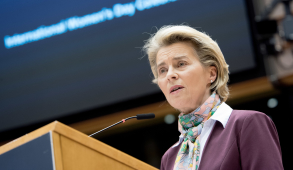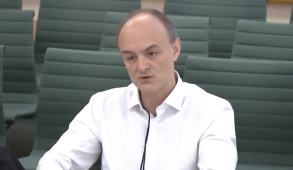Covid-19 update: 19 March
By the middle of the week, there were reports of some 18 different countries across Europe, including Germany, France and Spain, suspending use of the vaccine over concerns with links to blood clots. This was despite early assurances on several fronts that the number of blood clot incidents was below the level that would be expected in the general population. Other countries, including Poland and Belgium, continued to use the vaccine.
To many, the moves seemed out of proportion to evidence of problems. At the weekend, manufacturer AstraZeneca issued a statement that said that a ‘careful review of all available safety data of more than 17 million people vaccinated in the European Union and UK with Covid-19 Vaccine AstraZeneca has shown no evidence of an increased risk of pulmonary embolism, deep vein thrombosis (DVT) or thrombocytopenia, in any defined age group, gender, batch or in any particular country’.
Among this vaccinated cohort, there had been just 15 events of DVT and 22 events of pulmonary embolism reported as of 8 March. This was not only lower than the level expected to occur naturally in a general population of this size, but was also similar across other licensed Covid-19 vaccines.
The European Medicines Agency (EMA), the UK Medicines and Healthcare Products Regulatory Agency and the World Health Organization all said that the benefits of having the vaccine far outweighed any risks of side effects.
Health and social care secretary Matt Hancock also insisted the vaccine was safe. ‘We keep the effects of these vaccines under review all the time and we know the AstraZeneca vaccine is saving lives in the UK right now. So if you get the call, get the jab,’ he said. One person to get the call recently was prime minister Boris Johnson, who was due to get his jab on Friday, confirming that it would be the AstraZeneca version.
Despite these assurances, the EMA’s safety committee and the MHRA continued to review the data and on Thursday they both confirmed their earlier views that the benefits of the vaccine in combating Covid-19 far outweigh the risks. The UK regulator said that a detailed review had found that the available evidence does not suggest that blood clots are caused by the AstraZeneca Covid-19 vaccine.
It added that it had received a very small number of reports of an extremely rare form of blood clot in the cerebral veins (sinus vein thrombosis or CVST) occurring together with lowered platelets soon after vaccination. This type of clot can occur naturally in people who have not been vaccinated, as well as those suffering from Covid-19.
‘Given the extremely rare rate of occurrence of these CSVT events among the 11 million people vaccinated, and as a link to the vaccine is unproven, the benefits of the vaccine in preventing Covid-19, with its associated risk of hospitalisation and death, continue to outweigh the risks of potential side effects,’ said MHRA chief executive June Raine. ‘You should therefore continue to get your jab when it is your turn.’ The EMA issued a statement setting out the same conclusion.
Following the regulators’ further statements, European countries started to reverse their position and restart their use of the Oxford/AstraZeneca vaccine.
Export controls
However, even while many European countries had temporarily shelved their stocks of the AstraZeneca vaccine, the EU continued to flag up concerns about shortfalls in delivery of that specific vaccine compared to contracted levels. In a statement on Wednesday, European Commission president Ursula von der Leyen (pictured) said that AstraZeneca was now projecting to deliver 30 million doses of vaccine in the first quarter compared with a contracted 90 million. Meanwhile second quarter deliveries would only amount to 70 million, compared with the 180 million included in contracts.
She said there needed to be ‘reciprocity and proportionality’ in terms of vaccine exports. ‘If the situation does not change, we will have to reflect on how to make exports to vaccine-producing countries dependent on their level of openness,’ she said. ‘So, we are exporting a lot to countries that are themselves producing vaccines. And we think this is an invitation to be open. So that we also see exports from those countries coming back to the European Union.’ She added that Europe would also ‘reflect on whether exports to countries, who have higher vaccination rates than us, are still proportionate.’
There continue to be concerns across Europe about the slow progress of its vaccination programme. The Financial Times global Covid-19 vaccine tracker shows that around 400 million doses of coronavirus vaccines have been administered around the world to date. Israel leads the way with 105 total doses given per 100 residents, closely followed by the United Arab Emirates (68) and the UK (41). The European Union is at just 12 per 100 residents.
NHS England marked the 100th day of the vaccination programme by inviting adults aged 50-54 to book a vaccination – the final group in the nine initial priority groups identified by the Joint Committee on Vaccination and Immunisation. According to the government’s Covid-19 dashboard, some 21.5 million people in England had received a first dose of vaccine by the middle of the week – rising to more than 25 million for the whole UK, with second doses pushing towards 2 million. Scotland also hit a vaccination landmark, jabbing its 2 millionth person – meaning 44% of its adult population has now been vaccinated.
However the UK is not immune to vaccine supply problems with a ‘significant reduction’ in supply in April now expected to delay the start of vaccinations for the under 50s. A letter to NHS bodies and local authorities, from NHS England and NHS Improvement’s senior responsible officer for the vaccine programme Emily Lawson and primary care medical director Nikita Kanani, spelt out the impact.
‘The government's Vaccines Task Force have now notified us that there will be a significant reduction in weekly supply available from manufacturers beginning in the week commencing 29 March, meaning volumes for first doses will be significantly constrained,’ it said. ‘They now currently predict this will continue for a four-week period, as a result of reductions in national inbound vaccines supply.’
With this delay in place, the focus is on offering and re-offering vaccines to those in the nine priority groups and delivering the 12 million second doses to those people whose follow-up jab will be due in April. Systems are encouraged to access the £4.2m of non-recurring funding announced in February if needed to address vaccine confidence in areas of low take-up.
‘From today, the supply constraint means vaccination centres and community pharmacy-led local vaccination services should close unfilled bookings from the week commencing 29 March and ensure no further appointments are uploaded to the national booking system or local booking systems from 1 to 30 April,’ the letter said.
However, Mr Hancock said the country was on track to hit its targets of vaccinating everyone aged 50 and over by 15 April and all adults by the end of July. ‘There will be no weeks in April with no first doses,’ he said. ‘There will be no cancelled appointments as a result of supply issues. Second doses will go ahead as planned.’
The health secretary said the vaccine slowdown was because of a batch of 1.7 million doses being delayed due to the need to re-test its stability. And there is also a delay in a scheduled arrival from the Serum Institute of India, which is producing a billion doses of the Oxford/AstraZeneca vaccine this year.
Inquiry calls
This week also heard renewed calls for a full public inquiry into the coronavirus pandemic. Labour shadow cabinet office minister Rachel Reeves said the promised inquiry should get underway at the end of June when most social distancing restrictions are due to come to an end. Lessons should be learned now to improve any response if there was a further wave of the virus in the future. Former adviser to the prime minister Dominic Cummings (pictured) told the Commons Science and Technology Committee that there was a need to take ‘a very, very hard look’ at what went wrong and why in 2020, branding the Department of Health and Social Care as ‘smoking ruin’ in terms of procurement and personal protective equipment.
Ministers repeated their line that there would be an inquiry, but now was not the time. And deputy chief medical officer for England Jonathan Van-Tam said that an inquiry would be an ‘extra burden that wasn’t necessary’ at this stage.
However, the Care Quality Commission this week did look back at one aspect of NHS performance in its Covid-19 response. It published a report examining people’s experiences of do-not-attempt-cardiopulmonary-resuscitation (DNACPR) decisions during the pandemic, commonly knowns as DNRs. While there was some good practice, it also a ‘worrying picture’ of poor involvement of people using services, poor record keeping, and a lack of oversight and scrutiny of the decisions being made.
‘Covid-19 has brought this to the fore, but these are not new issues,’ said Rosie Benneyworth, CQC chief inspector of primary medical services and integrated care. ‘While this rapid review was not asked to make judgements on how decisions might have impacted individual cases, we have to take this opportunity to address these problems. We need to make sure that people have the opportunity to discuss their wishes about care and treatment in a compassionate and person-centred way.’
With virus cases falling, pressure has been reduced on the NHS Test and Trace service. Its latest report said that just over 39,000 people tested positive for Covid-19 in the week to 10 March – a 14% decrease on the previous week and continuing a nine week downwards trend. This was despite an 85% increase in the number of people tested, with the increase driven by the testing of students as they returned to school.
Nearly 37,000 cases were transferred to the contact tracing system and just over 32,0000 (89%) were reached. Of these, some and 26,000 (82%) provided details of 88,000 close contacts. Nine out of 10 of these contacts were reached and asked to self-isolate. The proportion of in-person tests in the community that were delivered within 24 hours was also 90%. The figure for all testing routes was 31%.
Contact tracing systems in Scotland, Wales and Northern Ireland operate at a much smaller scale than the English system. For example, the weekly report on Scotland’s Test and Protect system said that, for the week ending 14 March, 3,534 individuals had been recorded in the contact tracing system from which 7,269 unique contacts had been traced.
Welsh review
But these smaller tracing operations appear to avoid much of the flak that troubles the English service. Last week’s the Commons Public Accounts Committee published an often critical report on the performance of the English NHS Test and Trace system. This week Audit Wales put the smaller Welsh Test, Trace, Protect programme under the spotlight. While the report highlighted challenges and the need for the testing system to continue to evolve, there was overall a more positive tone about this report.
Test, Trace, Protect in Wales: an overview of progress to date said there was insufficient testing capacity in the early stages of the pandemic. But after some logistical challenges, a combination of Welsh laboratories and the UK Lighthouse Lab network had largely been able to turn around tests quickly. Contact tracing had ‘generally performed well’ although it struggled at times of high demand. However the programme had demonstrated it could ‘adapt and evolve quickly’.
There needs to be more frequent testing of patients and hospital staff and the programme needed a skilled and resilient workforce in place to continue through 2021 as wider public services start to reopen. Many staff have been redeployed from other parts of the public sector.
‘There have been times when the Test, Trace, Protect service has been stretched to the limit, but it has responded well to these challenges,’ said auditor general Adrian Crompton (pictured). ‘The programme needs to continue to evolve, alongside the rollout of vaccines, to ensure it remains focused on reaching positive cases, and their contacts, and supporting people to self-isolate to help keep the virus in check.’
The week ended with confirmation of additional funding to help health and social care services meet the costs of Covid-19 during 2021/22. Leaving it late in the day – just two-weeks before the new financial year starts – the government said that the £7bn package would support the next phase of the NHS and care sector’s response to the coronavirus. The NHS will receive £6.6bn over the next six months, which will continue funding for the hospital discharge programme, infection control measures, long Covid services and NHS staff support services. A £341m package for adult social care will help the continued use of infection control measures and rapid testing of staff and residents.
NHS representative bodies welcomed the news – although they pointed out that it should not have been left so late. NHS Providers chief executive Chris Hopson also stressed that meeting the additional costs of Covid was not the same as funding the clearing of the NHS backlog – see Additional Covid funding welcome, but may not be enough.
And NHS Confederation chief executive Danny Mortimer said the government must address the longer-term consequences of the pandemic on population health and the demands on the NHS. He pointed to the 4.6 million people waiting to start treatment, with serious concerns this could increase significantly, alongside additional demands for long Covid and mental health support. ‘[This] requires the government to go further and commit to long-term support for health and social care, including explaining to the public what can and can’t be achieved within the resources that are available,’ he said.
Related content
We are excited to bring you a fun packed Eastern Branch Conference in 2025 over three days.
This event is for those that will benefit from an overview of costing in the NHS or those new to costing and will cover why we cost and the processes.